Learn To Play Ukulele effortlessly with this comprehensive guide, designed to transform you from a complete beginner into a confident ukulele player. At LEARNS.EDU.VN, we’re passionate about making music accessible to everyone, offering resources and guidance every step of the way. Discover the joy of playing the ukulele, master essential chords, and unlock your musical potential with user-friendly tutorials and expert tips, building a solid foundation to start playing ukulele today.
1. Embracing the Ukulele Community: A Warm Welcome
The ukulele isn’t just an instrument; it’s an invitation to join a vibrant and supportive community. From the moment you pick up your uke, you’ll find encouragement and help from fellow enthusiasts. The ukulele’s magnetic charm fosters connections and creates memorable musical experiences. Be prepared to be captivated by the ukulele spirit, as it inspires you to share your newfound skills and passion with others. This instrument offers an accessible gateway to musical expression, making learning fun and rewarding, according to research on music education accessibility.
2. Understanding Hands and Handedness
Playing the ukulele involves a coordinated effort between both hands. One hand forms chords on the fretboard, while the other strums or plucks the strings to produce sound. Conventionally, most players, including some left-handed individuals, strum with their right hand and chord with their left. However, some lefties may find it more natural to strum with their dominant hand. This calls for a choice:
- Option 1: Mirror Image: Flip the ukulele around and play it upside down, creating your own chord shapes.
- Option 2: Restring: Reverse the string order to accommodate left-handed strumming. Restringing is a straightforward process that can eliminate frustration for left-handed players.
Throughout this guide, we’ll refer to the strumming hand as the right hand and the chording hand as the left. Chord diagrams are presented in the standard right-handed format. Left-handed players who have restrung their ukuleles can simply reverse the diagrams and instructions accordingly.
Proper nail care is also essential. Keep the nails of your chording hand short to facilitate clean fretting. The strumming hand can have longer nails, as they can be used as natural picks, similar to plectrums.
3. Mastering the Art of Holding Your Ukulele
Correct posture and grip are fundamental to your ukulele journey. Similar to the Suzuki violin method, investing time in learning how to hold the ukulele properly will pay dividends in the long run.
Whether you’re standing or sitting, hold the instrument close to your body. Some players prefer using a strap for optimal positioning, while others opt for a more natural feel. Without a strap, the right forearm secures the ukulele against your chest. The left hand should lightly hold the neck near the headstock.
If sitting, choose a chair without armrests and maintain an upright posture. Avoid slumping, especially in the beginning stages. Try crossing your right leg over your left and resting the ukulele gently on your thigh. Remember to relax your shoulders and breathe deeply.
4. Thumb Strumming and Your First Chord: C6
Place your fingers between the frets, with a gentle arch to each finger, with your thumb on the back of the neck, opposite your index finger.
Begin by gently stroking each string individually with the pad of your thumb, moving from top to bottom (strings 4-3-2-1). Strumming near the point where the neck meets the body often produces the sweetest sound. As you strum each string, verbalize the string number (4-3-2-1) and the corresponding pitch (G C E A). Repeat the sequence while singing the classic ukulele tuning phrase, “My Dog Has Fleas” to help memorizing the tuning.
Now, strum all four strings together in a steady rhythm: 1-2-3-4, 1-2-3-4. Sing “Row, Row, Row Your Boat” along with your strumming. If you’re struggling to find the starting note, it’s C, which is played on the third string. Over time, your strumming technique will evolve to include different fingers and patterns, but a consistent downstroke rhythm is essential.
When all the open strings are strummed together, they form a C6 chord. The notes of the C6 chord (G C E A) are the same notes to which we tune our ukuleles. This tuning is known as “C tuning” and is the most prevalent ukulele tuning method. Note that while older books may suggest tuning to Bb, and some Canadians tune to D, modern resources almost universally utilize C tuning. This chord requires no left-hand finger placement, making it an excellent starting point.
5. Introducing the Chording Hand and the C7 Chord
Imagine your hand is a sock puppet ready to speak. Ideally, your wrist should be straight, and your fingers should be aligned, tapping against your thumb. Rotate the “puppet” to face you. This is a good starting point for proper left-hand positioning.
Now, bring your hand beneath the headstock and position the neck of the ukulele in the puppet’s “mouth”. Locate the first string (the one closest to the floor, also known as the A string). Place the tips of your fingers between the frets, with your index finger on fret 1, middle finger on fret 2, ring finger on fret 3, and pinky on fret 4. Keep your fingers gently curved. Your thumb should align with your index finger on the back of the neck, and your wrist should remain straight.
Remove all fingers except your index finger, which should rest on the first string, first fret. In essence, your hand should resemble an “OK” sign, with gently curved fingers, thumb touching index finger, and a straight wrist. Strum the strings. Congratulations! You’re now playing a C7 chord, enabling you to accompany yourself in simple one-chord songs like “Old Joe Clark”.
Through consistent practice, chord shapes will become ingrained in your muscle memory. Until then, chord diagrams serve as helpful visual aids.
6. Understanding Chord Diagrams
Chord diagrams provide a visual representation of finger placement on the ukulele fretboard. The top dark line represents the nut, while the four vertical lines symbolize the strings (4-3-2-1, from left to right). The thin horizontal lines represent the frets. If you were to position your ukulele vertically next to the diagram, they would correspond visually. Dots indicate where to place your fingers on the strings, sometimes with numbers inside to indicate which finger to use (1=index, 2=middle, 3=ring, 4=pinky).
Refer to the C7 and F diagrams above to practice finger placement for these chords.
7. Playing Songs with Chord Charts
Many songs are written in a “campfire style”, with chord names or diagrams placed above the lyrics, indicating where the chord changes should occur. “Happy Birthday to You” is a classic example of a universally known song that can be played using just two chords, perfect for beginner ukulele players. Bring your ukulele to the next birthday party and witness the magic of everyone singing together in the same key.
The song starts on the note C. Find that note on the third string and mentally rehearse the beginning of the song. The rhythm is 1-2-3, 1-2-3. Strum this rhythm while holding a C7 chord to get a feel for the timing, then start singing “Happy…” on the third beat. When you reach “Birth…” switch to F, and so on. It may feel awkward at first, but the goal is to maintain a steady rhythm while strumming, singing, and changing chords.
Practice playing and singing along with “Happy Birthday”, using the chord chart provided.
8. Mastering the F Chord
Fingers on the fretting hand are numbered 1-4, from index to pinky. While playing the C7 chord, the index finger is positioned on the first string, first fret. Move that fingertip up one string so that it now rests on the second string, first fret. Next, place your middle fingertip on the fourth (top) string, second fret. This forms an F chord. Strum the strings. Ensure your fingertips are pressing down firmly; if your fingers touch other strings, the chord will sound muffled. As you practice, pay attention to your wrist and thumb position, keeping them relaxed and in the correct alignment. Now is the time to establish good habits.
Experiment with switching between F and C7. Note that the middle finger lifts off, and the index finger can easily shift down to the first string. Develop a mental map of this transition to optimize your movements. Once you feel comfortable, strum four slow, even beats on each chord, anticipating the chord changes. Gradually increase the tempo or reduce the number of beats per chord.
9. Discovering the G7 Chord
Begin by positioning your fingers for an F chord. To transition from F to G7, the index finger remains anchored on the 2nd string, first fret. The middle finger stays on the second fret but moves to the 3rd string. Add the ring finger to the first string, second fret. Maintaining proper fingertip placement and thumb position will make this chord possible.
Notice that this chord shape resembles a triangle pointing towards the nut. Strum the strings and adjust your finger positions until the chord rings clearly. Building finger strength and dexterity takes time and practice. Be patient with yourself throughout this process.
This chord is one of the more challenging chords in this lesson, so congratulate yourself on your progress. Practice transitioning from F to G7, following the same techniques you used to learn the transition from F to C7. Then, practice moving from G7 to C7.
Need some chords to start playing your favorite songs? Download our FREE ukulele chord chart!
10. Song Practice
Practicing becomes more enjoyable when you’re playing a song. F, G7, and C7, in that order, are the chords you need to play and sing “99 Bottles of Beer on the Wall.” By the time you reach the last bottle, you’ll have mastered your chord changes. Another option is the Hawaiian song, “Popoki Make a Cat,”
11. Home Base: The C Major Chord
You’ve learned the C6 and C7 chords, now let’s learn the C major chord. Position your sock puppet hand on your ukulele, with your thumb on the back of the neck and all four fingers over the first string. Lift all fingers except your thumb and ring finger, which should be on the third fret of the first string. Strum!
C major is a fundamental chord in ukulele playing. Because our instruments are tuned in C tuning, the C chord serves as a home base.
Notice that C major has a distinct sound compared to C7 and C6. In music theory terms, the “C” in the chord name indicates that all these chords are based on the note C. The number or word after the “C” defines the chord’s flavor, or quality, like a musical adjective. Major chords, being the most common and having a neutral flavor, are often written simply as “C” for C major.
12. Rhythm and Musicality
Bob Marley’s “Three Little Birds” is a fun, perennial favorite. It uses chords from our starter pack and is easy to play and sing, especially because you may already be familiar with the tune and catchy, repetitive lyrics. This song is enlivened by a strong backbeat, and a good chance to try out some easy strum variations.
1 and 2 and 3 and 4 and 1 and 2 and 3 and 4 and … This rhythm is the bones of most of the songs we know. The numbers are the beats and are when we strum down the strings, or downstrokes. They are arranged in groups of four, and as this is the most common rhythm in music, we call it “common time.” The ands are the upstrokes. It’s hard to strum up with the thumb, so this is where we introduce the right-hand fingers.
Relax and pretend you are standing over the kitchen sink, shaking off water off your hand without making a mess. There is probably a small movement from the elbow, a little twist of the wrist, and a flick of the fingers. That’s what a good strum should look like. You can use just the index finger, or a combination of several fingers. Use what is comfortable. Everyone develops his or her own style; the most important thing is to keep steady and relaxed.
We bring variety to our playing by leaving beats out or giving them emphasis (accent). For a simple backbeat strum, play only the even beats: that is, beats 2 and 4. Another backbeat can be achieved by leaving all the downbeats out and only playing the upstrokes, or ands.
A little more complicated is the “doo wack-a do” strum. On beats 1 and 3 you do a light, partial down strum, just brushing the fourth string, then you give a solid accented down strum on the even beats, and play the up beat afterwards. If you were counting it out, it would go like this: one two and three four and one two and three four and. Or down down up down down up, or do wack-a do wack-a do…
Due to copyright restrictions, we are unable to post notation or tablature for this musical work. If you have a digital or physical copy of the Fall 2019 issue, you will find the music on page 18.
13. Making Music a Lifelong Journey
With your newly acquired chord knowledge, you can now play countless songs. Connect with fellow ukulele enthusiasts, explore online resources, and discover new favorites. Music is a gift to be shared, so spread the joy and encourage others to learn. Remember, music is always more fun when played with friends!
14. Common Challenges and Solutions
Many aspiring ukulele players encounter similar challenges along their musical journey. Here’s a breakdown of common hurdles and practical solutions:
| Challenge | Solution |
|---|---|
| Finger Pain | Start with shorter practice sessions and gradually increase the duration as your fingers build calluses. Ensure you’re using proper technique and not pressing down too hard on the strings. |
| Chord Transitions | Practice chord changes slowly and deliberately. Focus on smooth transitions between chords, gradually increasing speed as you become more comfortable. |
| Strumming Rhythm | Use a metronome or drum machine to develop a steady rhythm. Start with simple strumming patterns and gradually incorporate more complex rhythms. |
| Tuning Issues | Use a reliable tuner (either electronic or app-based) to ensure your ukulele is properly tuned. Learn to recognize when your ukulele is out of tune by ear. |
| Motivation | Set realistic goals and celebrate your accomplishments. Find a practice buddy or join a ukulele group to stay motivated. Learn songs you enjoy playing to keep practice fun and engaging. |
| Finding Quality Resources | LEARNS.EDU.VN offers a wealth of instructional materials, from beginner lessons to advanced techniques. Explore our website for tutorials, chord charts, songbooks, and other valuable resources. |
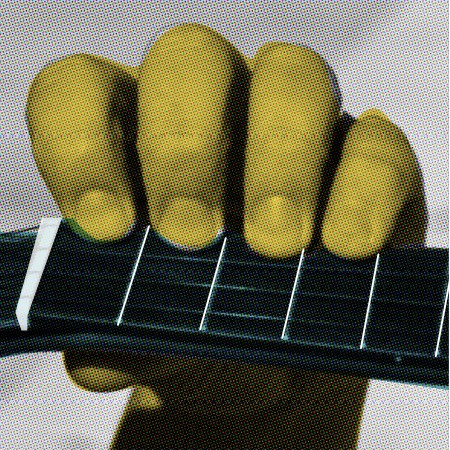
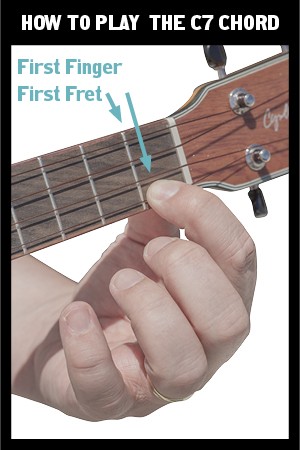
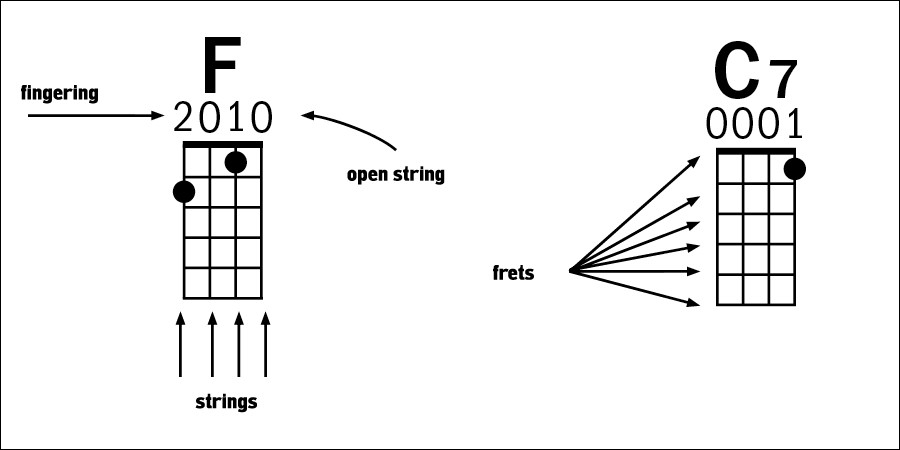
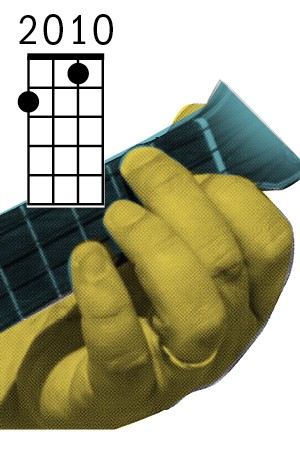

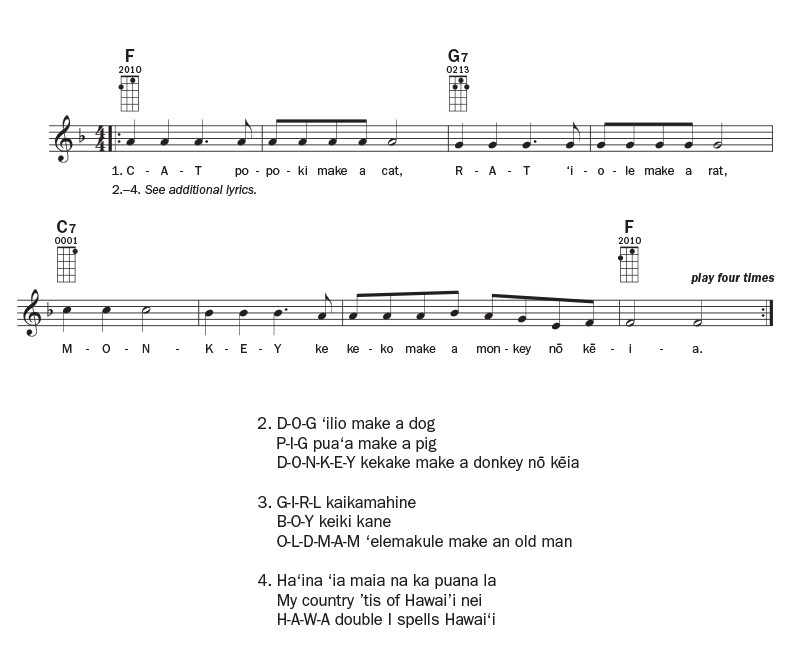
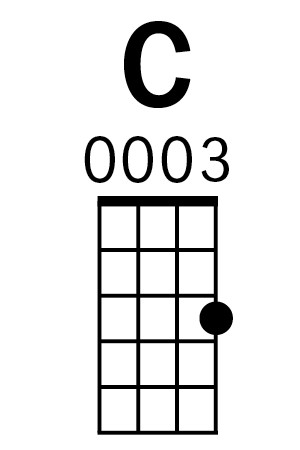

15. Essential Ukulele Accessories
Having the right accessories can enhance your ukulele playing experience. Here are some recommended items:
- Tuner: A reliable tuner is essential for keeping your ukulele in tune.
- Case: A case will protect your ukulele from damage during transport and storage.
- Strap: A strap can make playing more comfortable, especially when standing.
- Picks: While not essential, picks can be used for strumming or playing melodies.
- Strings: Keep a spare set of strings on hand in case one breaks.
- Music Stand: A music stand will hold your sheet music or songbook at a comfortable reading height.
16. Advanced Techniques to Elevate Your Playing
Once you’ve mastered the basics, explore these advanced techniques to expand your ukulele skills:
- Fingerpicking: Play individual notes with your fingers instead of strumming.
- Barre Chords: Use your index finger to press down all the strings at a particular fret, creating a new chord shape.
- Scales and Melodies: Learn to play scales and melodies on the ukulele to improve your dexterity and musicality.
- Improvisation: Experiment with improvising your own solos and melodies over chord progressions.
- Ukulele Styles: Explore different ukulele styles, such as Hawaiian, jazz, and classical.
17. The Enduring Appeal of the Ukulele: Statistics and Trends
The ukulele has experienced a surge in popularity in recent years, driven by its affordability, portability, and ease of learning. Here are some noteworthy statistics:
- Global Ukulele Market: The global ukulele market is projected to reach $148.4 million by 2027, growing at a CAGR of 3.7% from 2020 to 2027. (Source: Allied Market Research)
- Ukulele Ownership: Approximately 5% of households in the United States own a ukulele. (Source: National Association of Music Merchants (NAMM))
- Ukulele Learning: Online ukulele lessons and tutorials have seen a significant increase in popularity, with platforms like YouTube and Udemy experiencing a surge in ukulele-related content. (Source: Google Trends)
These statistics highlight the ukulele’s growing appeal and its potential as a lifelong musical companion.
18. Expert Insights from Ukulele Masters
Here are some tips and insights from renowned ukulele players:
- Jake Shimabukuro: “Practice consistently, even if it’s just for 15 minutes a day. Focus on quality over quantity.”
- James Hill: “Listen to a wide variety of music and try to incorporate different styles into your playing.”
- Sarah Maisel: “Don’t be afraid to experiment and find your own unique voice on the ukulele.”
- Heidi Swedberg: “Embrace the ukulele community and learn from other players.”
- Jim D’Ville: “Focus on mastering the fundamentals before moving on to more advanced techniques.”
19. The Educational Benefits of Learning Ukulele
Learning to play the ukulele offers a multitude of educational benefits:
| Benefit | Description |
|---|---|
| Cognitive Development | Playing the ukulele enhances cognitive skills such as memory, attention, and problem-solving. |
| Motor Skills | Ukulele playing improves fine motor skills and hand-eye coordination. |
| Emotional Expression | Music provides an outlet for emotional expression and creativity. |
| Social Skills | Playing in a ukulele group or ensemble fosters social interaction and collaboration. |
| Cultural Appreciation | Learning ukulele exposes you to different musical cultures and traditions. |
| Academic Performance | Studies have shown that music education can improve academic performance in other subjects, such as math and reading. A study by the University of California, Los Angeles (UCLA) found that students who participated in music programs scored higher on standardized tests. |
20. Exploring Ukulele Variations
Ukuleles come in various sizes, each with its unique tonal qualities and playing characteristics. Here’s a brief overview:
| Type | Scale Length | Tuning | Characteristics |
|---|---|---|---|
| Soprano | 13 inches | GCEA | The smallest and most traditional ukulele size, producing a bright, cheerful sound. |
| Concert | 15 inches | GCEA | Slightly larger than the soprano, offering a fuller sound and more comfortable finger spacing. |
| Tenor | 17 inches | GCEA | A popular choice for intermediate and advanced players, providing a richer, more resonant tone. |
| Baritone | 19 inches | DGBE | Tuned like the highest four strings of a guitar, offering a deeper, more mellow sound. |
| Bass Ukulele | 20+ inches | EADG | Tuned like a bass guitar, providing a low-frequency foundation for ukulele ensembles. |
Choosing the right ukulele size depends on your personal preferences and playing style. Soprano ukuleles are ideal for beginners due to their affordability and portability, while tenor and baritone ukuleles cater to more experienced players seeking a wider range of tonal possibilities.
21. Ukulele Care and Maintenance
Proper care and maintenance are essential for preserving the quality and longevity of your ukulele. Here are some guidelines:
- Storage: Store your ukulele in a case or gig bag when not in use to protect it from dust, humidity, and temperature changes.
- Cleaning: Wipe down your ukulele with a soft, dry cloth after each playing session to remove fingerprints and oils.
- Humidity: Maintain a consistent humidity level (around 45-55%) to prevent the wood from drying out or warping. Use a humidifier or dehumidifier as needed.
- String Changes: Replace your strings every 3-6 months, or more frequently if you play regularly.
- Professional Setup: Consider having your ukulele professionally set up by a qualified technician to ensure optimal playability and intonation.
22. Mastering Ukulele Strumming Patterns
Experimenting with different strumming patterns adds depth and complexity to your ukulele playing. Here are a few common patterns to get you started:
| Pattern | Description |
|---|---|
| Down-Up | A basic pattern consisting of alternating downstrokes and upstrokes. |
| Island Strum | A syncopated pattern that emphasizes the off-beats, creating a relaxed, Hawaiian feel. |
| Calypso Strum | A lively pattern that combines downstrokes, upstrokes, and muted strums. |
| Fingerstyle Strum | Involves plucking individual strings with your fingers to create intricate patterns and textures. |
| Triple Strum | A variation of the Down-Up pattern, involving three strums per beat (Down-Up-Down). |
Practice these patterns with different chords and songs to develop your strumming versatility.
23. Expanding Your Ukulele Repertoire: Online Resources
A vast array of online resources can help you expand your ukulele repertoire:
- Ukulele Tabs: Websites like Ukulele Tabs and Ultimate-Guitar offer a vast collection of ukulele tabs and chord charts for songs of all genres.
- YouTube Tutorials: Countless YouTube channels provide ukulele lessons, song tutorials, and performances.
- Online Ukulele Communities: Join online ukulele communities and forums to connect with other players, share tips, and discover new songs.
- Ukulele Apps: Several ukulele apps offer chord libraries, tuners, metronomes, and other useful tools.
24. Exploring Ukulele Communities and Workshops
Immerse yourself in the ukulele community by attending workshops, festivals, and open mic nights. These events offer opportunities to learn from experienced players, network with fellow enthusiasts, and showcase your skills. Check local community centers, music stores, and online event calendars for ukulele-related gatherings in your area.
25. Unleash Your Musical Potential with LEARNS.EDU.VN
At LEARNS.EDU.VN, we’re committed to providing comprehensive resources and guidance to support your ukulele journey. Our website offers:
- Beginner-Friendly Tutorials: Step-by-step lessons that guide you through the fundamentals of ukulele playing.
- Chord Libraries: Extensive chord charts for various ukulele tunings.
- Songbooks: Curated collections of popular songs arranged for ukulele.
- Expert Tips and Advice: Insights from experienced ukulele players and educators.
- Community Forum: A platform to connect with fellow ukulele enthusiasts and share your progress.
FAQ: Your Ukulele Questions Answered
Here are some frequently asked questions about learning and playing the ukulele:
- Is the ukulele easy to learn?
Yes, the ukulele is generally considered easy to learn, especially compared to other stringed instruments. Its smaller size, fewer strings, and simple chord shapes make it accessible to beginners of all ages. - How long does it take to learn to play the ukulele?
With consistent practice, you can learn basic chords and strumming patterns within a few weeks. Achieving proficiency takes time and dedication, but you can start playing simple songs relatively quickly. - What is the best type of ukulele for beginners?
A soprano ukulele is a great choice for beginners due to its affordability, portability, and traditional ukulele sound. Concert ukuleles are also suitable for beginners who prefer a slightly larger instrument with more finger spacing. - Do I need to know how to read music to play the ukulele?
No, you don’t need to read music to play the ukulele. Many ukulele players learn using chord charts and tabs, which provide visual representations of finger placement. - What are some easy songs to play on the ukulele?
Some popular easy songs for ukulele beginners include “Happy Birthday,” “Row, Row, Row Your Boat,” “Three Little Birds,” and “I’m Yours.” - How often should I practice the ukulele?
Aim to practice at least 15-30 minutes per day for optimal progress. Consistency is key. - How do I tune my ukulele?
You can tune your ukulele using an electronic tuner, a tuning app, or by ear using a reference pitch. The standard ukulele tuning is GCEA (G, C, E, A). - What are some common ukulele chords?
Some common ukulele chords include C, G7, F, Am, Dm, and Em. - How do I change ukulele strings?
You can find numerous tutorials online that demonstrate how to change ukulele strings. The process typically involves loosening the old strings, removing them from the bridge and tuning pegs, and then installing the new strings. - Where can I find ukulele lessons?
LEARNS.EDU.VN offers comprehensive ukulele lessons for beginners and beyond. You can also find lessons on YouTube, online ukulele communities, and local music stores.
Embark on your musical adventure with LEARNS.EDU.VN, and unlock the joy of playing the ukulele!
Remember, learning an instrument is a journey, not a destination. Embrace the process, celebrate your progress, and never stop exploring the boundless world of music. Visit learns.edu.vn at 123 Education Way, Learnville, CA 90210, United States or contact us on Whatsapp: +1 555-555-1212, and let the ukulele become your lifelong companion.